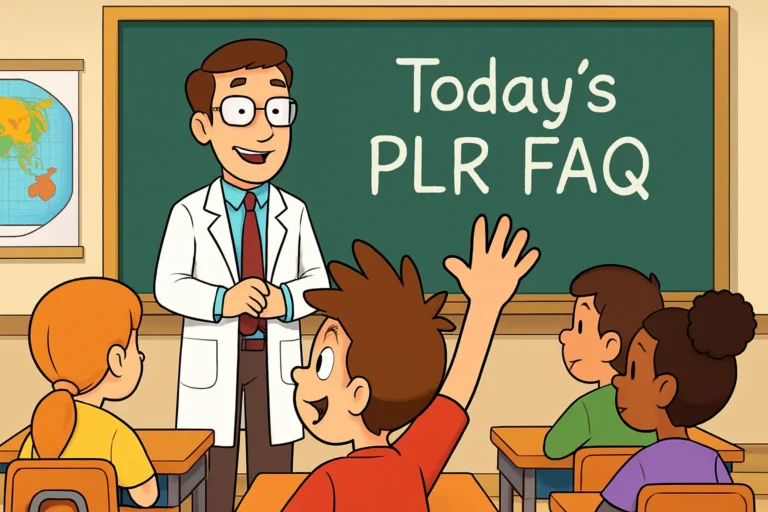From Zero to Hero: Crafting Top-Notch Courses With PLR Content
Did you know that a recent study revealed that 63% of course creators use PLR content to enhance their offerings?
Imagine the possibilities of transforming generic material into engaging courses that captivate your audience.
By following a few key strategies, you can elevate your content from mundane to exceptional, setting yourself apart in the competitive world of online learning.
Explore the nuances of leveraging PLR effectively and watch your courses soar to new heights of success.
Understanding PLR Content
To make the most of PLR content, understanding its unique characteristics is essential. PLR, or Private Label Rights, content grants you the ability to use, edit, and repurpose pre-made materials as if you'd created them yourself. This flexibility allows you to save time and effort in developing courses or products while still maintaining a level of customization.
One key aspect to grasp about PLR content is that you aren't the only one with access to it. Other users may also purchase the same materials, so it's important to modify the content to make it unique to your brand. This customization can include adding your own insights, examples, and branding elements to differentiate your final product.
Moreover, understanding the licensing terms of the PLR content is critical. These terms dictate how you can use the material, whether you can sell it as-is or only after significant modifications. By familiarizing yourself with these terms, you can make sure that you're leveraging the PLR content in a way that aligns with your goals and legal obligations.
Choosing the Right PLR Resources
When selecting PLR resources, make sure they align with your course objectives and resonate with your target audience. Begin by identifying your course goals and the needs of your students. Look for PLR content that covers topics relevant to your subject matter and provides value to your learners. Consider the format of the PLR materials; make sure they're compatible with your teaching style and delivery methods.
Evaluate the quality of the PLR resources. Check for accurate information, engaging writing style, and proper formatting. High-quality content will enhance the credibility of your course and keep your students engaged. Assess the rights included with the PLR content. Make certain that you have the necessary permissions to modify and distribute the materials as part of your course.
Moreover, explore the reputation of the PLR provider. Look for reviews and testimonials to gauge the reliability and trustworthiness of the source. Selecting reputable PLR resources will help you deliver a professional and valuable learning experience to your students.
Customizing PLR for Your Audience
As you tailor PLR content for your audience, consider their unique preferences and learning styles to maximize engagement and relevance. Start by analyzing your audience's demographics, interests, and knowledge level. Adapt the language and tone of the PLR materials to match the familiarity and expertise of your learners. Customize examples and case studies to resonate with their experiences and make the content more relatable.
Personalize the content by incorporating real-life scenarios or challenges that your audience may encounter. This helps them see the practical application of the information provided in the course. Additionally, modify the exercises and activities to align with their skill levels and areas of interest. By tailoring the content to their specific needs, you can enhance their learning experience and increase their motivation to participate actively in the course.
Remember to seek feedback from your audience throughout the customization process. This will help you make adjustments to better meet their expectations and make sure that the course remains engaging and valuable to them.
Designing Engaging Course Materials
Craft engaging course materials by incorporating interactive elements and multimedia to captivate your learners' attention and enhance their overall learning experience. Utilize videos, infographics, quizzes, and interactive presentations to break the monotony of text-heavy content. Including real-world examples, case studies, or simulations can make the learning more practical and engaging. Encourage active participation through discussions, group activities, and hands-on exercises to foster a collaborative learning environment.
To cater to different learning styles, provide a variety of materials such as audio recordings, visual aids, and written content. Incorporate storytelling to make the course content more relatable and memorable. Break down complex topics into digestible chunks and use visual cues to aid understanding. Make sure that the course materials are visually appealing, well-organized, and easy to navigate to keep learners focused and motivated.
Remember to regularly review and update your course materials to keep them relevant and engaging. Solicit feedback from learners to identify areas for improvement and make necessary adjustments to enhance the overall learning experience.
Maximizing Value With PLR Integration
Integrate PLR content strategically to enhance the value and effectiveness of your course materials. By blending carefully selected PLR resources into your curriculum, you can offer diverse perspectives, in-depth insights, and valuable supplementary materials to your students. Start by identifying the key areas where PLR content can fill gaps or provide a different angle on the topic at hand. Incorporate PLR materials that align seamlessly with your course objectives and learning outcomes.
Maximizing the value of PLR integration involves more than just adding content – it's about integrating it in a way that enhances the overall learning experience. Mix PLR resources with your original content to create a cohesive narrative that flows smoothly and engages learners effectively. Make sure that the PLR content is up to date, relevant, and accurate to maintain the credibility of your course. By thoughtfully integrating PLR materials, you can enrich your course offerings, save time on content creation, and provide a more inclusive learning experience for your students.
Frequently Asked Questions
How Can I Ensure That the PLR Content I Choose Aligns With My Brand's Values and Messaging?
To guarantee the PLR content aligns with your brand's values and messaging, begin by thoroughly reviewing the content. Look for themes, tone, and language that resonate with your brand. Make necessary edits to customize the content to better reflect your brand identity.
Consistency is key, so make certain that the PLR content fits seamlessly into your overall brand strategy. By taking these steps, you can maintain brand integrity and effectively communicate your message.
Are There Any Legal Considerations I Should Be Aware of When Using PLR Content in My Courses?
When using PLR content in your courses, there are legal considerations to keep in mind. Verify that the PLR rights allow for use in educational settings.
Check for any restrictions on altering the content. Respect copyright laws by attributing the original creator if necessary.
Consult a legal professional to clarify any uncertainties. Stay compliant to protect yourself and your business from potential legal issues related to intellectual property rights.
What Strategies Can I Use to Make the PLR Content More Interactive and Engaging for My Audience?
To make PLR content more engaging, consider incorporating quizzes or interactive activities. Add multimedia elements like videos or infographics for visual appeal. Utilize storytelling techniques to create a narrative flow.
Encourage audience participation through discussion forums or live Q&A sessions. By implementing these strategies, you can enhance the overall learning experience and keep your audience actively engaged throughout the course.
How Can I Track the Success and Effectiveness of My Courses That Incorporate PLR Content?
To track the success and effectiveness of your courses with PLR content, monitor metrics like completion rates, student feedback, and engagement levels. Use analytics tools to measure traffic, conversions, and user behavior.
Collect testimonials and reviews to gauge satisfaction. Conduct surveys or quizzes to gather insights on learning outcomes. Adjust your strategies based on data to continuously improve your courses.
Stay proactive in evaluating and refining your content for best results.
Are There Any Best Practices for Updating and Refreshing PLR Content to Keep It Relevant and Valuable to My Audience Over Time?
To keep PLR content relevant and valuable, regularly updating and revitalizing it's key. Consider adding new examples, case studies, or statistics to reflect current trends.
Engage with your audience to gather feedback and insights. By staying attuned to their needs and preferences, you can tailor the content to remain impactful.
Conclusion
You've learned how to turn PLR content into high-quality courses that engage your audience. By customizing and integrating PLR materials effectively, you can create valuable and engaging learning experiences.
Now, put your newfound knowledge into practice and watch your courses go from zero to hero. Remember, the key to success lies in constantly evolving and adapting your content to meet the needs of your audience.
The truth is, with dedication and creativity, you can truly excel in course creation.






